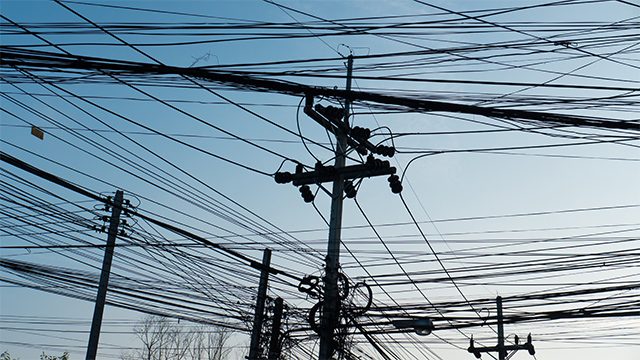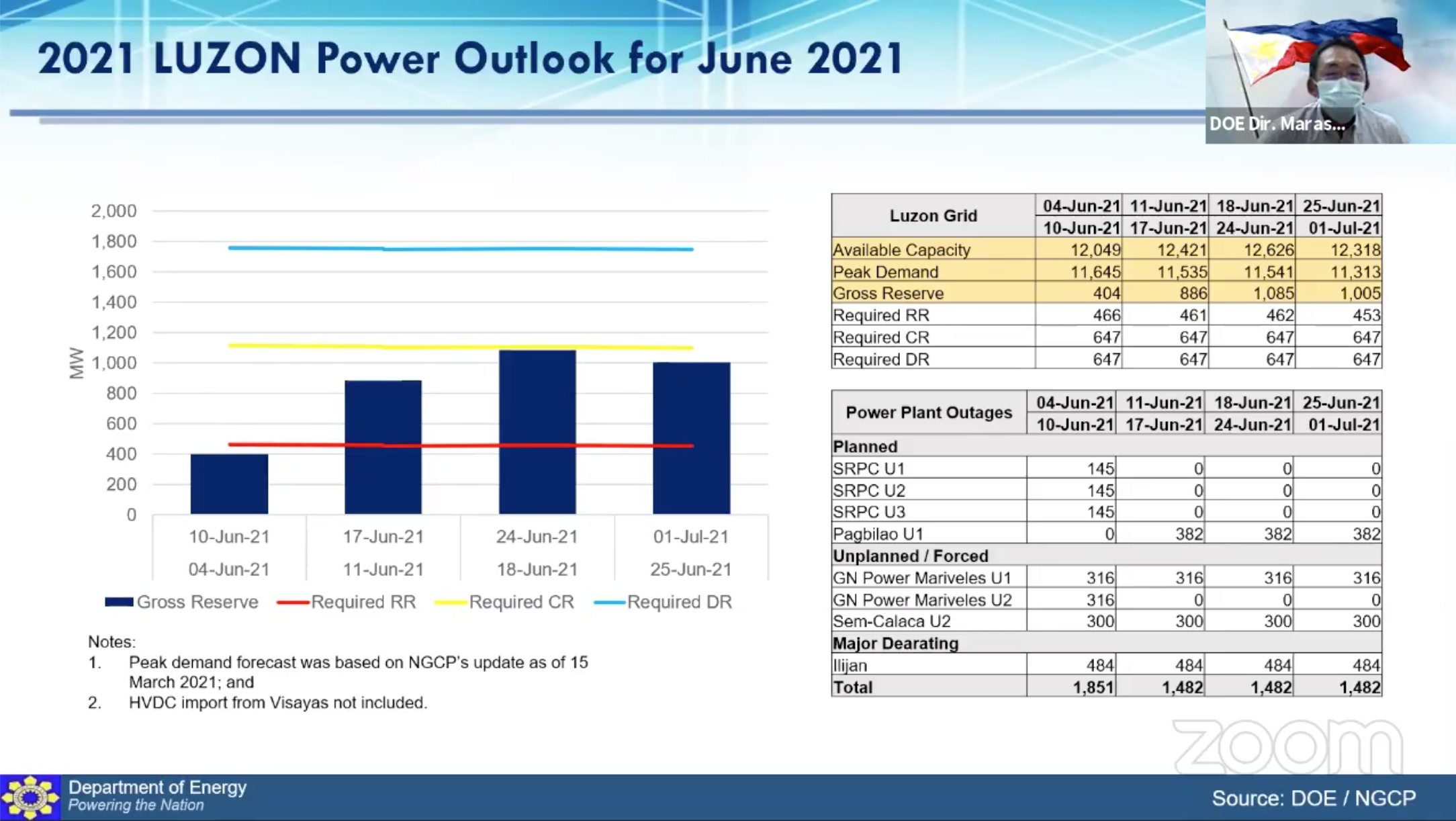SUMMARY
This is AI generated summarization, which may have errors. For context, always refer to the full article.

The Department of Energy (DOE) said on Friday, June 4, that the Luzon grid may still be placed under red alert until June 10.
Based on the presentation of DOE Director Mario Marasigan in the House hearing on the Luzon blackouts, the forecast for June 4 to 10 showed that demand may peak at 11,645 megawatts against the available capacity of 12,049 MW.
While there won’t be deficiencies, the 404-MW reserves left for that week remain thin, or under the required regulating reserves of 466 MW.
When the grid is under red alert, rotational blackouts may happen.

From June 11 onwards, reserves are expected to be boosted with the expected return of the 382-MW TPC Pagbilao Unit 2 and 316-MW GMEC Mariveles Unit coal plants on Sunday, June 6, and Tuesday, June 8, respectively.
Still, a yellow alert may still be raised in the grid in the coming weeks.
As of Thursday, June 3, total plant outages and deratings had reached 4,088 MW. Derating refers to the lowering of power plants’ rated capability.
More plants coming
During the hearing, Ang Asosasyon Sang Mangunguma Bisaya-Owa Mangunguman (AAMBIS-OWA) Representative Sharon Garin asked for the amount of investments that the energy department has secured, so far, under the Duterte administration.
Energy Undersecretary Emmanuel Juaneza said there were already “major committed projects” in varying stages – some have gone through permit application, some have started construction, while others have already completed building.
Since 2019, Juaneza said, the installed capacity of new operational plants has reached 1,200 MW.
Some projects, with a total installed capacity of 1,500 MW, have been further delayed due to the coronavirus pandemic. The delayed projects were supposed to be operational by the end of 2019.
During the hearing, energy officials also reiterated the need for ancillary services or additional power reserves. The DOE sees AS as a remedy to the recurring problem.
From Monday, May 31, to Wednesday, June 2, several areas in Metro Manila and other parts of Luzon experienced rotational blackouts as the grid was placed under red alert.
The DOE has been working with the Energy Regulatory Commission, the Philippine Competition Commission, and the Department of Justice to look into allegations of sabotage. – Rappler.com
Add a comment
How does this make you feel?



![[ANALYSIS] Panay blackouts](https://www.rappler.com/tachyon/2024/03/panay-blackouts.jpg?resize=257%2C257&crop=277px%2C0px%2C720px%2C720px)


There are no comments yet. Add your comment to start the conversation.